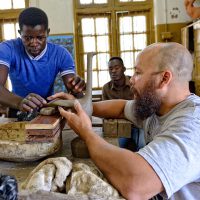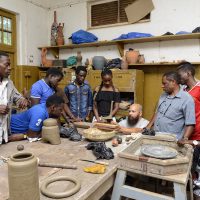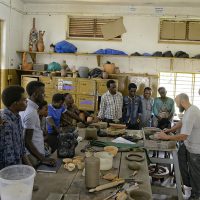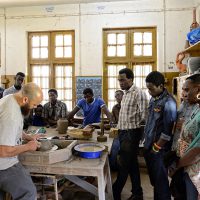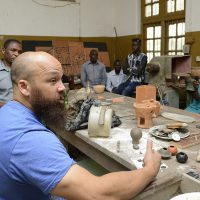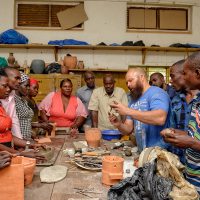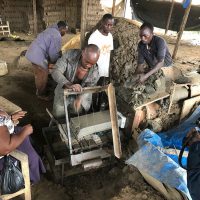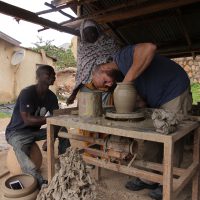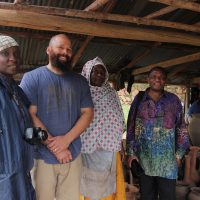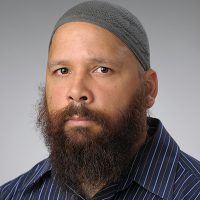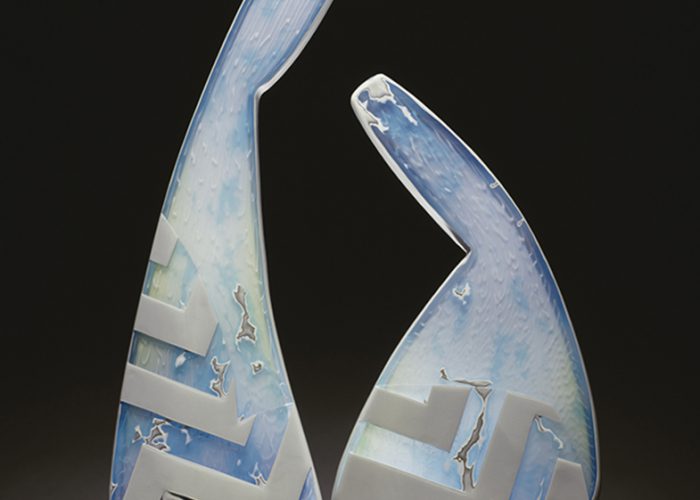In September of 2017, Sharif Bey, a dual associate professor in art education and teaching and leadership in the College of Visual and Performing Arts and Syracuse University’s School of Education, and a studio artist who maintains an active exhibition record, traveled to Kampala, Uganda for an artist exchange. Bey’s innovative ceramic work is on display in the Art in Embassies exhibition at the Residence of Ambassador Malac. Said the Ambassador, “I selected one of Sharif Bey’s ceramic pieces for the Ambassador’s residence in Uganda because I thought his art would resonate with the Ugandan people. I was right! We were lucky enough to host Sharif in Kampala for a week. During the visit, Sharif demonstrated techniques he used to make his bold and original ceramic works and shared his dual passions – art and teaching – with an enthusiastic and receptive audience of art students and teachers from Makerere University and working ceramicists. Seeing the exchange of ideas between an American artist and his Ugandan colleagues was a powerful example of direct diplomacy.”
This program was created in close coordination with Makerere University, one of the leading academic institutions in Uganda, and US Embassy Kampala. Bey resided in the on-campus guest house as he taught hands-on workshops and conducted campus lectures with students of the Department of Industrial Arts and Applied Design and the School for Fine Art. Said Bey, “I was glad I stayed on campus. Not only is clay a time sensitive material but during my week there, being close by, I was able to work extensively with students in intimate settings, outside the schedule of work and class hours.” By having this experience with the students, he was able to compare and contrast the different experiences of materials, tools, and processes of producing and firing ceramic wares in academia and in the countryside in Uganda, with their counterparts in the United States, which in the artists’ words was “especially fascinating”.
On Thursday, September 21, Ambassador Malac hosted a representational event at the residence where Bey had the opportunity to meet with fellow artists from Uganda. “Despite producing works of art influenced by West and East African sculpture, traditions and cultural practices for a number of years, I was never afforded an opportunity to travel to the continent of Africa until I travelled to Kampala.” Bey also met with local potters and visited galleries including NACCAU, AKA, Umoja, and Afriart Galleries in and around Kampala. “In addition to teaching, professionally, I learned a great deal from talking with the potters and brick makers and observing the conditions under which the Ugandan potters worked. In 7 days, I conducted two master workshops and 3 public lectures. Outside of this officially scheduled time, I demonstrated continuously. Together we built damp boxes, poured a plaster table and I was able to critique student work. I feel that the students gained a great deal from my workshops and lectures.”
On his last day in Kampala, Bey led a discussion on opportunities for ceramists and the marketing of ceramic art. The artist remains in contact with some of the students via social media and is working on establishing a connection between faculty of Makerere University and his home institution of Syracuse University for future programming and research.
